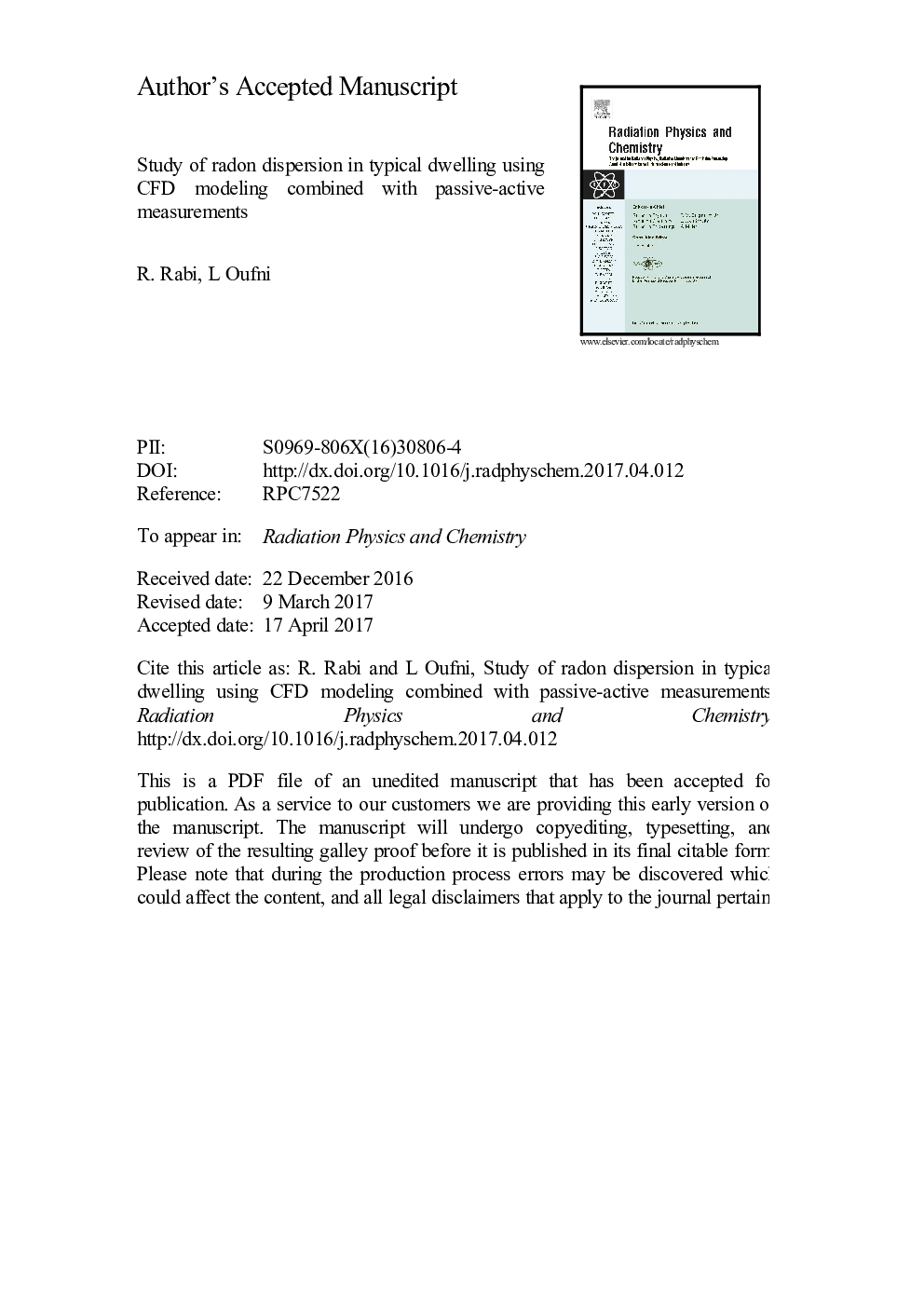| Article ID | Journal | Published Year | Pages | File Type |
|---|---|---|---|---|
| 5499143 | Radiation Physics and Chemistry | 2017 | 25 Pages |
Abstract
Inhalation of radon (222Rn) and its decay products are a major source of natural radiation exposure. It is known from recent surveys in many countries that radon and its progeny contribute significantly to total inhalation dose and it is fairly established that radon when inhaled in large quantity causes lung disorder. Indoor air conditions and ventilation systems strongly influence the indoor radon concentration. This study focuses on investigating both numerically and experimentally the influence of environmental conditions on the indoor radon concentration and spatial distribution. The numerical results showed that ventilation rate, temperature and humidity have significant impacts on both radon content and distribution. The variations of radon concentration with the ventilation, temperature and relative humidity are discussed. The measurement results show the diurnal variations of the indoor radon concentration are found to exhibit a positive correlation with relative humidity and negatively correlate with the air temperature. The analytic solution is used to validate the numeric results. The comparison amongst analytical, numerical and measurement results shows close agreement.
Keywords
Related Topics
Physical Sciences and Engineering
Physics and Astronomy
Radiation
Authors
R. Rabi, L. Oufni,
